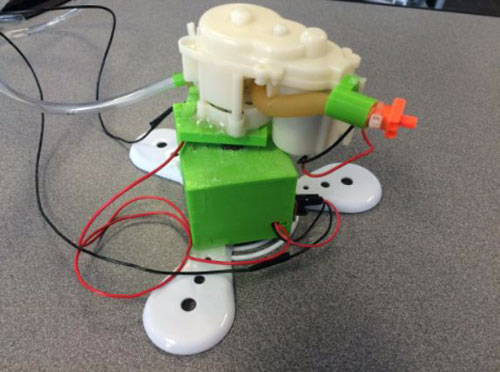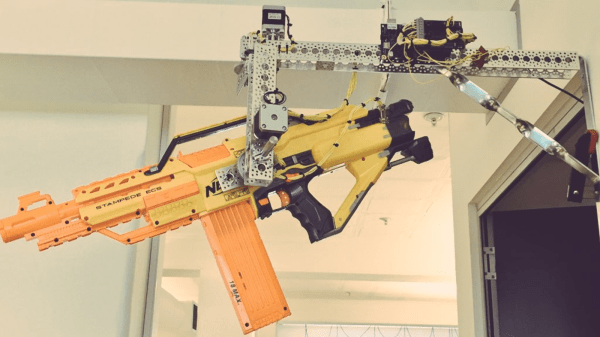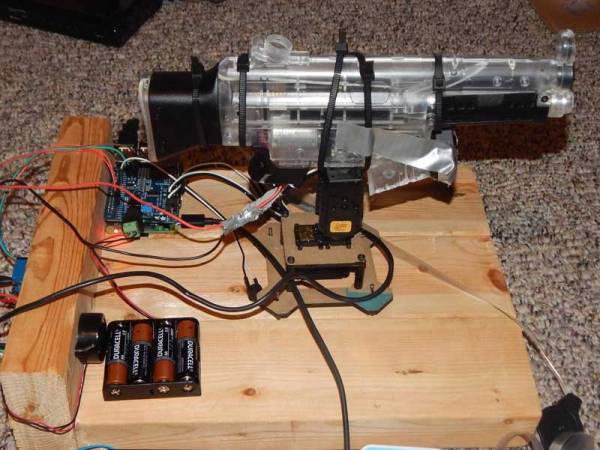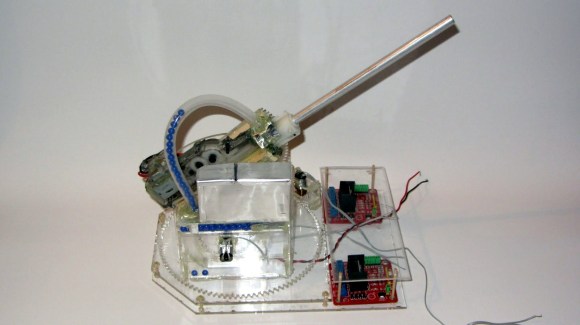Thieves beware. If you prowl around [Matthew Gaber]’s place, you get soaked by his motion activated super-squirter. Even if he’s not at home, he can aim and fire it remotely using an iPhone app. And for the record, a camera saves photos of your wetted-self to an SD card.
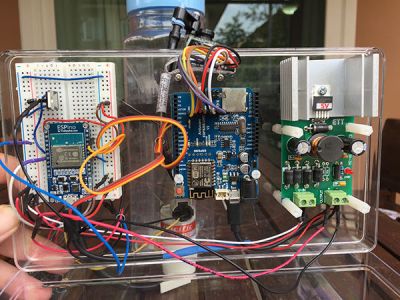
The whole security system is handled by three subsystems for target acquisition, photo documentation, and communications. The first subsystem is centered around an ESPino which utilizes a PIR sensor to detect motion. It then turns on a windscreen washer pump and uses pan and tilt servos to squirt water in a pattern toward the victim.
The target acquisition hardware also sends a message to the second subsystem, an ArduCAM ESP8266 UNO board. It takes a burst of photos using an ArduCAM Mini Camera mounted beside the squirter outlet. The UNO can also serve up a webpage with a collection of the photos.
The final subsystem is an iPhone app which talks to both the ESPino and the UNO board. It can remotely control the squirter and provide a video feed of what the camera sees.
One detail of the build we really enjoyed is the vacuum relief valve he fabricated himself. It prevents siphoning through the pump when it’s not on. Don’t miss a demo of the squirter in action after the break.
Continue reading “Motion Activated Super-Squirter Stands Guard”


